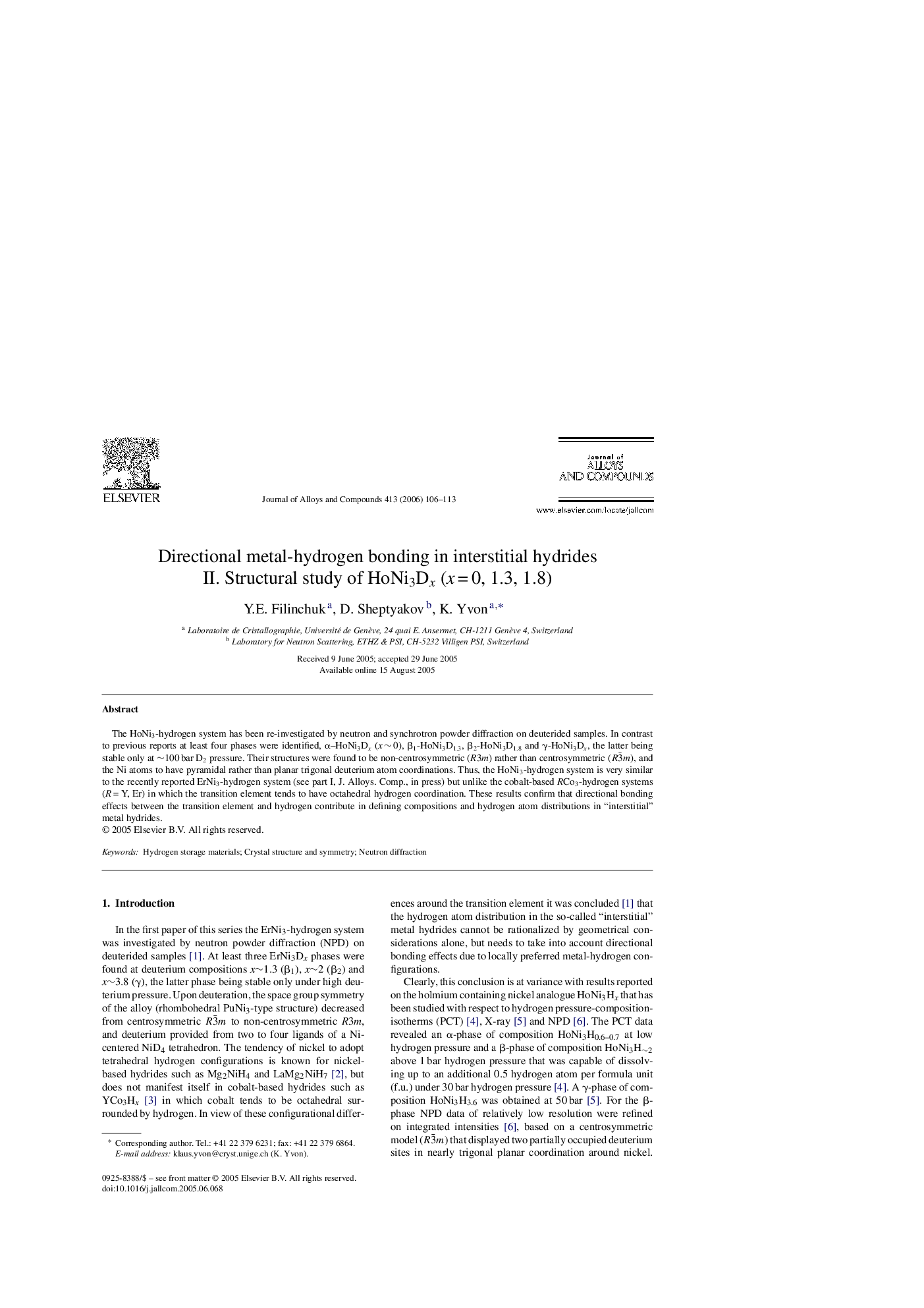| Article ID | Journal | Published Year | Pages | File Type |
|---|---|---|---|---|
| 1627936 | Journal of Alloys and Compounds | 2006 | 8 Pages |
The HoNi3-hydrogen system has been re-investigated by neutron and synchrotron powder diffraction on deuterided samples. In contrast to previous reports at least four phases were identified, α–HoNi3Dx (x ∼ 0), β1-HoNi3D1.3, β2-HoNi3D1.8 and γ-HoNi3Dx, the latter being stable only at ∼100 bar D2 pressure. Their structures were found to be non-centrosymmetric (R3m ) rather than centrosymmetric (R3¯m), and the Ni atoms to have pyramidal rather than planar trigonal deuterium atom coordinations. Thus, the HoNi3-hydrogen system is very similar to the recently reported ErNi3-hydrogen system (see part I, J. Alloys. Comp., in press) but unlike the cobalt-based RCo3-hydrogen systems (R = Y, Er) in which the transition element tends to have octahedral hydrogen coordination. These results confirm that directional bonding effects between the transition element and hydrogen contribute in defining compositions and hydrogen atom distributions in “interstitial” metal hydrides.
